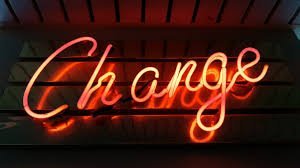Does Cold Weather affect Neon Signs?

As temperature drops, neon signs can lose their brightness and look unattractive or defective. This phenomenon happens because cold temperatures can affect the state of gases. But with neon as an inert gas, it can’t be blamed for this. Neon even has the narrowest liquid range of −248.45 °C to −245.95 °C (−415.21 °F to −410.71 °F), which means that this gas can be resistant to cold conditions.

Gases combined with neon to form various neon sign colors are the ones that get affected with temperature drops. Neon and Argon are the two most commonly used gases to create neon signs. And as stated above, neon can withstand cold temperatures. Argon, on the other hand, can significantly react to cold temperatures. So, you can expect neon signs that use argon gas to dim, flicker, or get their lights out as the temperature plunges.
What’s actually happening?
Gases used in neon signs usually work its best at warm temperatures. Also, science has taught us that electricity produces heat. So, when a gas used for neon signs is trapped in a closed tube and zapped with an electrical source, it produces heat and soon emits a specific color. Cold temperatures can interrupt this process, and when it gets cold enough, tubes in neon signs become dim or pinkish.
Is there a way to solve this problem?
Yes, there is!
You don’t need to worry much about your neon sign dimming or flickering during cold weather conditions. It will work perfectly when it gets warm. Recently, you can find neon signboards with dim sign cabinets. These cabinets are equipped with fluorescent lamps to help warm the neon sign up when it gets cold.
NEON SIGN
- Latest News
- Testimonies
- Help Centre
- Delivery Information
- Returns Policy

- About Us
- Gallery
- Terms and Policy
- Terms and Conditions
- Blogs
- Support
- Contact Us
- FAQ
- LIVE CHAT Online Now

Stay Connected and Get Updates
The Gravity Forms plugin is not activated